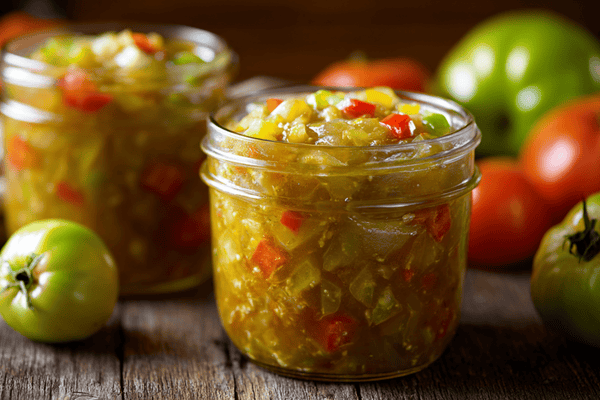 One of the most fascinating things about living on planet earth is the way that humans have developed customs and proper etiquette for almost everything. What’s truly amazing is how these customs and rules differ around the world. What might be seen as uber polite in one country could be frowned upon in another.
One of the most fascinating things about living on planet earth is the way that humans have developed customs and proper etiquette for almost everything. What’s truly amazing is how these customs and rules differ around the world. What might be seen as uber polite in one country could be frowned upon in another.But it’s important that we all respect one another’s traditions and etiquette, especially when entering another country or even a restaurant or setting within our own country that abides by another culture’s rules.
There are some interesting rules to Japanese dining etiquette. If you’re visiting Japan or are heading to a Japanese restaurant and want to be as respectful as possible, it’s important to educate yourself on Japanese table manners.
Table of contents
Getting Seated
 In Japan, it is traditional to sit on a type of mat called a tatami which is made from reeds. This is also common in Japanese homes, restaurants and other settings so don’t be surprised if you are confronted with this setup.
In Japan, it is traditional to sit on a type of mat called a tatami which is made from reeds. This is also common in Japanese homes, restaurants and other settings so don’t be surprised if you are confronted with this setup.At a formal event, it is Japanese etiquette to sit in a position on your heels with the legs tucked under your bottom. This is known as the seiza position but it can be uncomfortable if you aren’t used to it. However, a lot of Japanese hosts will ask you to make yourself comfortable and in this case, you can sit with your legs crossed in front of you. If you’re female, you would sit with your legs to one side. In any case, it is not good etiquette to spread your legs directly out front.
You should also remember that your shoes should be removed before stepping onto your tatami. It’s also imperative not to step on anyone else’s tatami as this is considered bad manners.
When it comes to where you will sit, this is just as important. If you’ve been invited to a meal then your host will likely tell you where to sit. However, keep in mind that the seat in the middle of the setup is considered to be the most honoured place. Next to this, is the second most honoured position.
Usually, it would be the host that takes the middle position on one side of the table while the most honoured guest sits in the middle on the opposite side. In this case, the guest would be on the side of the table that’s furthest away from the door.
Things to Remember at the Table
There are a lot of things to keep in mind when dining in a Japanese setting and this can feel intimidating. That said, most Japanese people will be aware that you might not be familiar with their customs and traditions and, provided that you are seen to be making an effort, they aren’t going to come at you with pitchforks if you make a small faux pas.That said, it’s worth remembering as many table manners as possible so that you don’t find yourself in an awkward situation.
● When you are initially seated in a restaurant, you’ll normally be given a wet towel. You should use this to clean your hands and NEVER for cleaning your face or neck. Once you are finished using the towel, you can fold it neatly and place it on one side.
● If you’re at someone’s house then it is polite to start the meal by using the phrase itadaki-masu which translates to I humbly receive. Even if you aren’t confident in most of the Japanese language, some key phrases like this can show that you’re really trying to make an effort.
● It is not polite to simply dump too much soy sauce onto your food. This is especially true when you are eating plain rice. What you should do instead is take a small bowl and put a small amount of sauce into it. Make sure that you only take as much as you need for your meal as leaving any behind is considered to be wasteful.
● Ramen and soup, such as miso soup, are common food items on a Japanese menu and it’s important to know how to eat them correctly. It is perfectly OK to sip the liquid from your bowl but make sure that you don’t hold your chopsticks while you are doing this.
● As we mentioned when talking about soy sauce, it is not polite to waste food when eating at Japanese restaurants or in a Japanese home. You should only put onto your plate what you will eat as you’ll be expected to clear the entire thing; that includes every grain of rice!
The Correct Way to Use Chopsticks
 Unlike in the west, the Japanese favour chopsticks for eating their meals. At first glance, you might think that they look incredibly difficult to use but they’re pretty easy once you get used to them. Moreover, if you’re eating in Japan, there might not even be an option to use western cutlery so you’ll have no other choice but to learn how to use them.
Unlike in the west, the Japanese favour chopsticks for eating their meals. At first glance, you might think that they look incredibly difficult to use but they’re pretty easy once you get used to them. Moreover, if you’re eating in Japan, there might not even be an option to use western cutlery so you’ll have no other choice but to learn how to use them.Once you have learned how to pick food up and eat with your chopsticks (it’s worth practising beforehand), you’ll need to learn the correct etiquette for using them. To begin, you should lift the chopsticks with both hands; avoid playing with them and don’t rub them together.
When you eat in a Japanese household, the food will normally be placed on the table for you to help yourself. However, not all hosts will provide utensils for serving. In this case, you will need to take the thicker end of the chopsticks, the end that you don’t eat with, and take food from the serving bowls.
It’s imperative that you do not raise your chopsticks any higher than your mouth. This is seen as bad manners and should be avoided at all costs.
Sometimes, there will be a chopstick rest on the table where you can place the chopsticks when you aren’t using them. However, this might not always be the case. If there isn’t one, you should NEVER rest the chopsticks on your bowl. Instead, use the wrapper that they came in to rest them or a side plate or tray.
If you have broth or ramen or anything else that contains liquid, use your chopsticks to eat any solid food items within this. When they’re all gone, you can lift the bowl and drink the liquid from it.
Finally, you should never pass food around with chopsticks. There is a ritual used by the Japanese at a funeral whereby bones are passed around with chopsticks. Passing food in this way simply reminds people of death. Moreover, if you place your chopsticks upright in a bowl of rice, this is not considered polite.
As well as this, there are some other general rules for chopstick etiquette that you should observe.
● Don’t use your chopsticks to point at people while you’re eating.
● Never wave the chopsticks around over any food on the table or use them to stab food.
● Chopsticks should not be used to point at food on the dinner table, even if you’re using them to tell others that you like the dish.
● You shouldn’t suck your chopsticks to remove sauce or other food.
● You should pick food up with the chopsticks but never stab them into food to lift it.
The Correct Way to Eat Sushi
 Sushi is one of the main dishes you might be served in a Japanese restaurant and if you’re headed out for a business lunch, it’s almost guaranteed that that’s what you’ll be eating.
Sushi is one of the main dishes you might be served in a Japanese restaurant and if you’re headed out for a business lunch, it’s almost guaranteed that that’s what you’ll be eating.As we discussed earlier, you should only put as much soy sauce into your small bowl as needed. When you dip your food into soy sauce, you should be very careful. For example, if you have nigiri, you should only dip the meat into the sauce and you should never leave any food, such as grains of rice floating in the sauce.
There are lots of different types of sushi and they all have their own Japanese names. If you want to enjoy your experience more, it’s worth learning the different terms as this will help you to understand what you’re being served when eating sushi.
Having a Drink With Dinner
Drinking with your meal comes with its own set of rules and it’s essential that you remember these if you don’t want to cause offence.Once you have your drink, you should not take a sip until everyone else at the table has a drink in front of them. At this point, everyone will raise their glasses and say kampai. You can then start drinking.
Just like in the west, the Japanese enjoy an alcoholic beverage with their meal but again, there are rules you’ll need to think about here. It is common practice for the Japanese to serve one another alcoholic drinks instead of helping themselves to their own drink.
For this reason, you may be expected to keep an eye on the glasses of your tablemates and, when they are running low, offer to refill them. By the same token, you’ll find that other people around the table will offer to refill your drink; they might even just go ahead and do it.
There are certain situations where getting drunk is frowned upon. If you’re in a very formal setting, this type of behaviour is not good manners. But there are other more casual settings like izakaya where you are free to drink as much as you please provided you don’t cause a disturbance to other diners.
Of course, there are some people that don’t drink alcohol and that’s fine. You should simply let your host know and request other types of drink. These might include soft drinks, teas, juices and even alcohol-free wine or beer.
Noises at the Table
 In the west, we might pull a strange face at someone who was slurping deeply at the table. However, in Japanese culture, this is considered a good thing as it shows that you are enjoying your meal. What’s more, when you slurp noodles, this makes them cooler so you don’t burn your mouth!
In the west, we might pull a strange face at someone who was slurping deeply at the table. However, in Japanese culture, this is considered a good thing as it shows that you are enjoying your meal. What’s more, when you slurp noodles, this makes them cooler so you don’t burn your mouth!While slurping is considered good etiquette, munching is not! Other things you should avoid doing at the table in Japan include burping and blowing your nose. If you need to do this, excuse yourself and head to the bathroom.
What to Do When the Meal Is Over
Once your plate is empty and your belly is full, there are still a few things that you’ll need to remember if you want to continue showing off your knowledge of Japanese table etiquette when you have finished eating.Usually, people will thank the host by saying gochisosama-deshita once the meal is over.
Sometimes, you will use disposable chopsticks, in which case, you’ll need to put them back into the wrapper and fold over the open end. If you haven’t used disposable chopsticks then you will need to place them sideways onto your plate. Never have them pointing at the person opposite you.
Note that, if you put the chopsticks into a rice bowl, this is a sign that you aren’t yet finished with your meal.
When you are eating at a restaurant, it is customary for the host to pay; sometimes the highest ranking person at the table will pay so it’s worth keeping an eye out depending on the situation. If you are the one paying then you will need to make sure that you put the money onto the tray given to you by your waiter or waitress. You should never hand it directly to them.
However, if there isn’t a tray then it is OK to hand the money to your server. But you should always use both hands when passing money back and forth.
It isn’t considered polite to tip in Japan since they take pride in dignity and hard work. They consider that you are already paying for the service you have received and there is no need to add anything extra.


